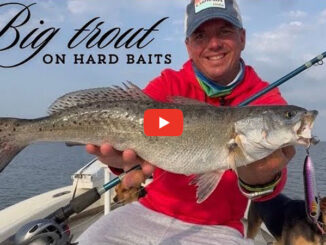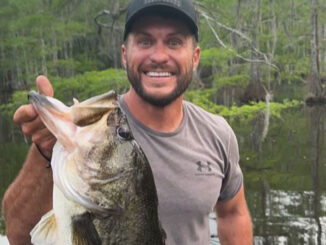
There’s a natural reef along the coastline a few miles west of Southwest Pass that gives up speckled trout consistently in July.
It’s fairly easy to locate Tete Butte and a smaller “satellite” reef just west of it and closer to the shore than the main reef. The reef attracts speckled trout, redfish and, naturally, saltwater fishermen, such as Keo Khamphilavong of New Iberia.
“When they move in, they are there to feed. It produces a lot of fish. That’s why people fish that,” Khamphilavong said from years of experience about the speckled trout.
Oh, there are other mid-summer speckled trout hotspots, other reefs to the east — Pavy’s Reef, Diamond Reef, Long Reef, Camille Reef and Shell Keys. When Khamphilavong targets speckled trout, he almost always checks on Tete Butte.
Tree-like reef
Some anglers have described Tete Butte as a reef shaped somewhat like a tree with the lower end of the “trunk” on the north end approximately 200 yards from the shoreline and the top extending south into deeper waters of the Gulf. All in all, it’s less than one-half mile long. The reef’s sides slope generally into 3- to 5-foot depths.
“I’ve got some coordinates to fish that reef far out. Early in the morning they’ll be shallow, but then they back off when it gets hot. There are a lot of humps and deep areas,” he said, noting that getting out into deeper water is the key to putting speckled trout in the boat.
The all-around outdoorsman, also an avid deer hunter, usually brings Craig Landry and/or Randy Migues, both of New Iberia, with him in his 24-foot long Blazer Bay. The three anglers fish the Southcentral Fishing Association “slot” redfish tournament circuit out of Cypremort Point, but can fill a box with speckled trout in a hurry at his best July spots, especially Tete Butte.
Generally, he said, he’ll fish soft plastics on the down current side during tidal movement. If the water’s moving from the west, he’ll fish on the east side of the reef and vice-versa.
“I don’t fish live bait. I do well enough with soft plastics,” he said, adding he does like to use mullet-colored soft plastics when that time comes.
Khamphilavong, who owns Khamphilavong Construction, sticks mainly with Matrix Shad in Lemonhead or ultraviolet colors on a ¼-ounce leadhead.
Most of the time, he said, he fishes the soft plastic 2 feet deep under a popping cork. If there is current, he’ll try tightlining.
“I love when the water is a little cloudy,” he said. “I think that (Lemonhead Matrix Shad) works really well. The ultraviolet, when the sun hits it, has got little purple colors and white, almost like shrimp colors.
“I notice a lot of people fish live bait. There’s nothing wrong with that,” Khamphilavong said, noting a midsummer favorite is live shrimp under a popping cork and, eventually, others who fish with natural baits go to Carolina-rigged pogeys and mullets, or fish those under a popping cork, as well.


